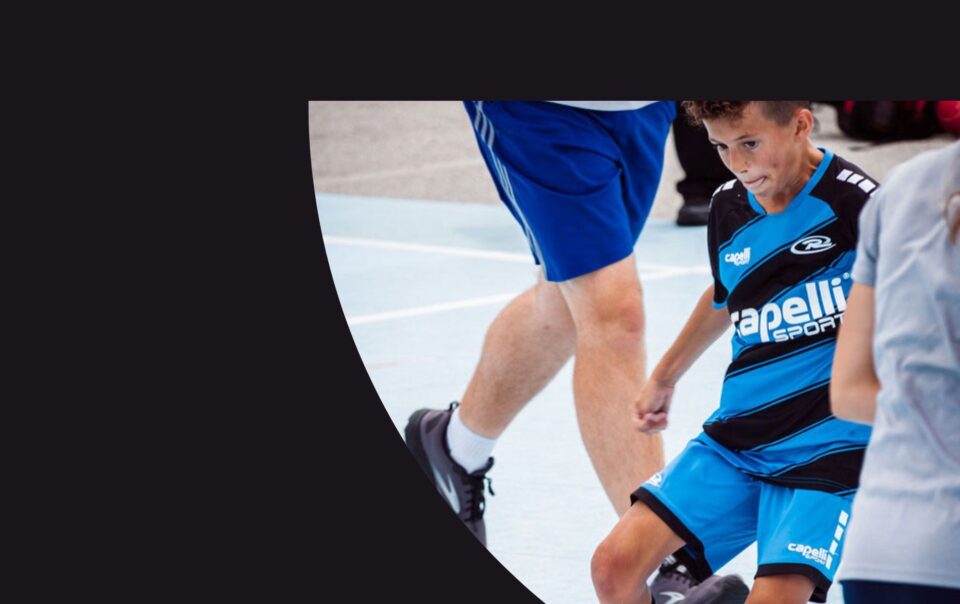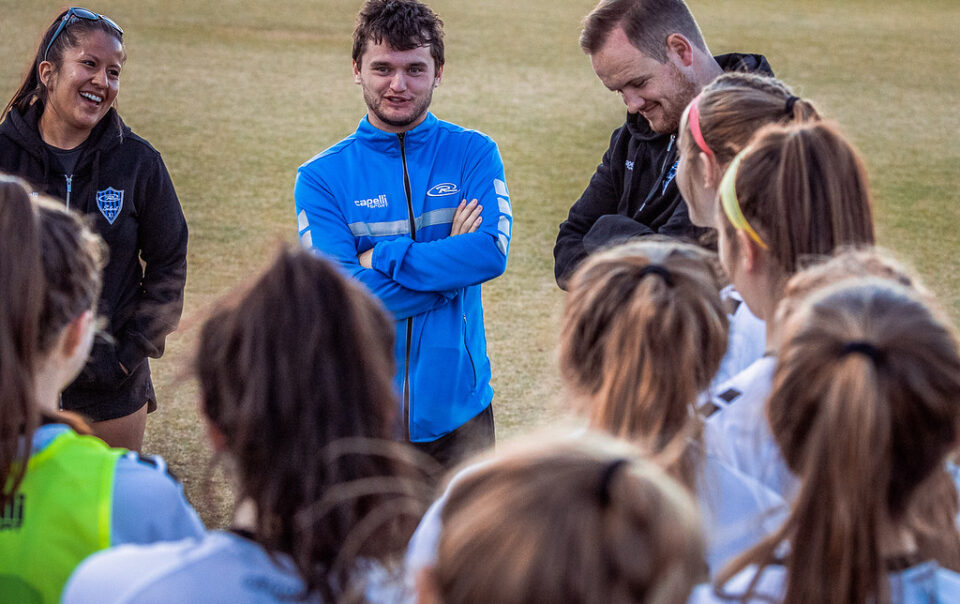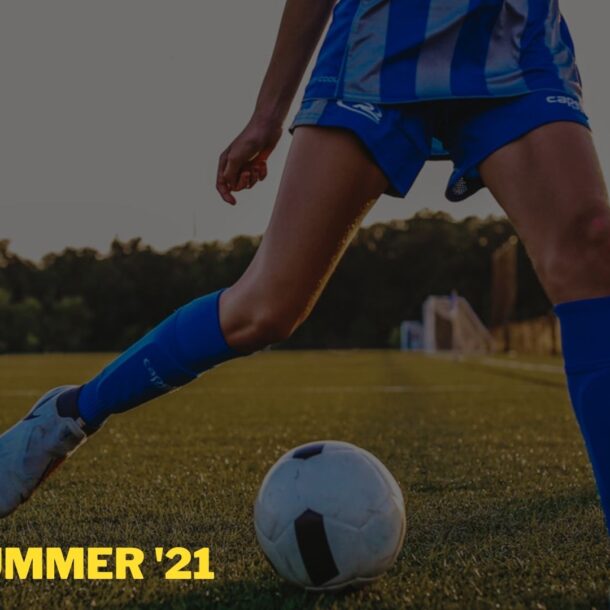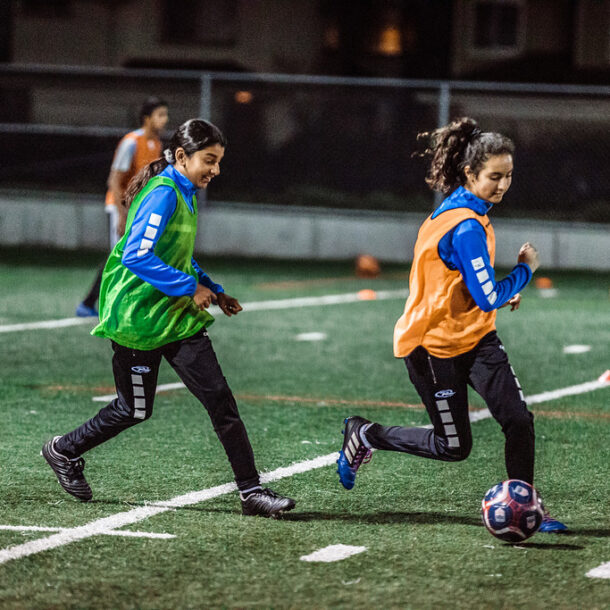
This article was written by Pablo Toledo, Rush Soccer’ Sporting Project Director, and Megan McCormick, Coach Education Consultant.
Using visual cues in our coaching points is one of the most interesting elements of The Rush Blue Thread and definitely one that we receive many inquiries about.
Earlier in this month we spoke in a very interesting article about the science behind it and its relevance for coaching. Later on, we presented the topic within the realistic context of a session.
We wanted to wrap the month now with another realistic, pragmatic post. In this case, we put together a list of coaching points that include visual cues that you can add to your sessions.
Note: These coaching points are included in our curriculum that you can access at The Rush Coaching Manual.
Comparing by opposition:
We are frequently asked this question, could you tell me a coaching point without a visual cue and then modify it to include it? The answer is: Yes, sure, here’s two.
- Scanning. Frequently we hear: When you’re off the ball, scan, check over your shoulder. I’m guilty of saying this as well. It’s not wrong, but it could be improved by actually giving the player a tip on what he or she is trying to see at that moment. Otherwise, they might be looking but not seeing anything relevant. We could change it and add a visual cue with the following: When you’re off the ball, check over your shoulders to see if you’re under immediate pressure (or) where your teammates are.
- Dribbling. Coaching points usually refer to ‘dropping a shoulder’ or “changing directions” that lack any visual cues, we could replace that with: When you go 1v1 against a defender, you need to see space behind him/her to decide to dribble (or not).
Other examples of coaching points without visual cues (to avoid):
In regard to teaching center backs to drop back vs. step – “Next time you need to anticipate and drop off before the ball gets played.”
Coaching 1v1 defending – “You need to put more pressure on the ball and close more space.” or “You need to be close enough to touch the attacker”.
Checking to the ball vs. moving away to create space: “Don’t always run away from the ball, sometimes you need to check to receive”.
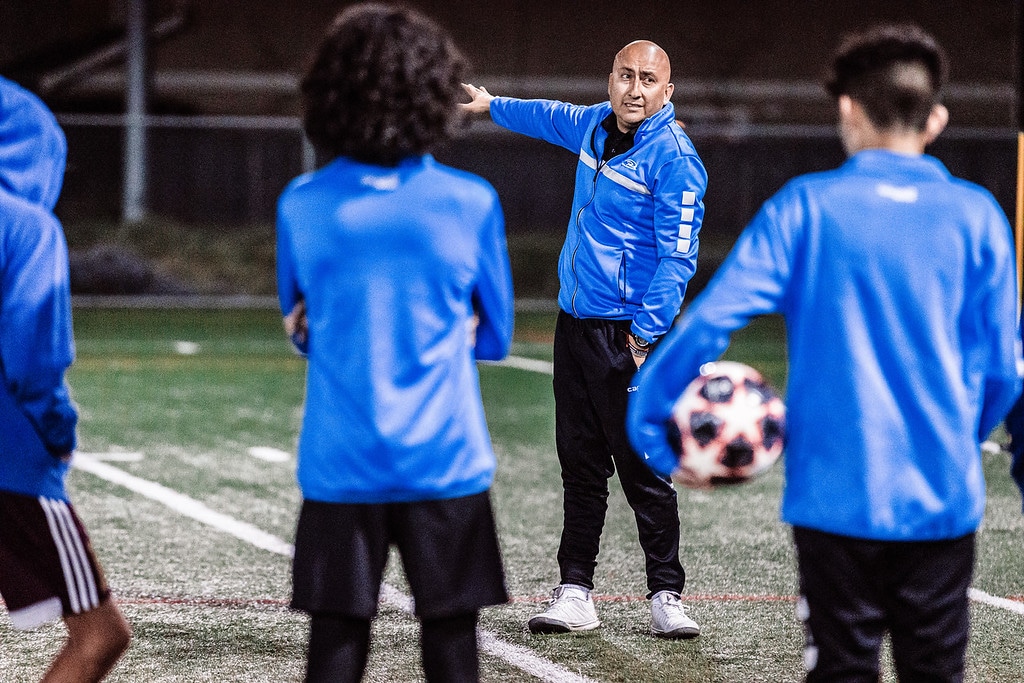
The Old And Always Great Need Of Being Specific:
The more specific the questions, often the more useful they are in leading vision to perceive what matters in the environment. It’s important to work to frame the who, what, when, and where – this will help players better understand the HOW and WHY you are addressing with coaching points. This ensures that players and coaches are referring to the same action and outcome or set of actions and outcomes.
Least Useful:
What happened?
What did you see?
More Useful:
Did you notice x? (i.e. Did you notice the movement of the outside back?).
What did you see when x happened? (i.e. What did you see when you checked your shoulder just before receiving the ball?).
Most Useful:
What did you notice about x when you did y? (i.e. What did you notice about the opponent’s center backs when you checked back to receive the ball?).
If you see x, what should you do next? (i.e. If you see the opponent receive a difficult pass with their back to goal, how should you defend them?). Where was x, when y was happening? (i.e. Where was our #10 and the opponent’s 6 when we regained the ball deep in our own half?).
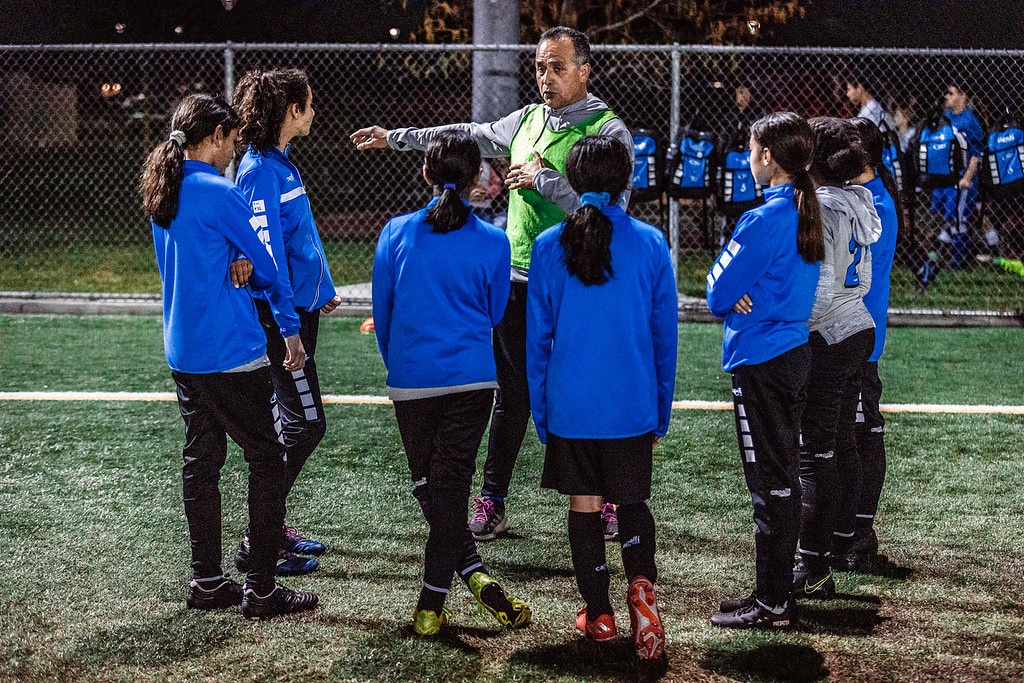
General Examples:
| Action | Visual Cues you might use | How it might sound |
| 1v1 Attacking | Speed & body angle of pressuring defender/Space behind defender Position of covering defender/Distance to goal | What did you notice when she came to press you? Did you notice the distance to the next defender? If you recognize that you are in shooting range, you can focus on moving the defender laterally to create a small window to shoot. |
| 1v1 Defending | Vision of the attacker/Length of attackers touch/Help and support | Can you get close enough to make the attacker look down? If you see that you have defensive support around you, how might you step differently to press the ball? |
| Checking to the ball vs. moving away into space | Pressure (or not) on the ball/Ball carrier head up (or not)/Numbers around the ball | If you notice your teammate is under pressure with their head down, is it better to check to the ball or move away into space?What were our numbers around the ball? Do you think we needed additional help in that area? |
| Passing vs. Dribbling | Space (or not) in front/Area of the field/Numerical advantage | Did you notice how close you were to our box, what would have been a different way to advance the ball? What might be a good solution to advance or keep the ball if we notice we have a numerical advantage? |
More Specific Examples:
| Action | Visual Cues you might use | How it might sound |
| Playing a pass to a wide player into space vs. playing to feet | Position of opponent’s outside back | When you see the outside back step high and tight to our winger, let’s see if we can find a pass into the space behind them.If the outside back is deep and connected to the back 4, where can we pass? |
| Center backs dropping vs. stepping when the opponent has the ball in the midfield | Amount of pressure on the ball/Opponent’s first touch, body position, and vision (head up vs. head down)/Position of teammates/Distance between the ball and goal you are defending | If the midfielder receives the ball facing our goal and is able to pick his head up, we need to find ways to protect the space behind. Center backs need to drop when the opponent’s midfielders have the ball and you see that the outside back(s) is not in a position to provide cover. |
Incorporate these visual cues to your coaching and favor your player’s learning experience. Hope you found value in this post, coach.



